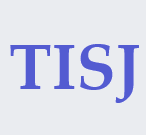Advances and new treatments are available for neuromuscular disorders and affect Quality of Life: Difference between revisions
No edit summary |
No edit summary |
||
| Line 11: | Line 11: | ||
|citation_volume=1 | |citation_volume=1 | ||
|citation_issue=1 | |citation_issue=1 | ||
|citation_abstract_html_url=https://journal.topitalianscientists.org/Advances_and_new_treatments_are_available_for_neuromuscular_disorders_and_affect_Quality_of_Life | |citation_abstract_html_url=https://journal.topitalianscientists.org/Advances_and_new_treatments_are_available_for_neuromuscular_disorders_and_affect_Quality_of_Life | ||
|citation_issn=3033-5132 | |citation_issn=3033-5132 | ||
Revision as of 09:27, 22 March 2024
| Published |
| January 4, 2024 |
| Title |
| Advances and new treatments are available for neuromuscular disorders and affect Quality of Life |
| Author |
| Corrado Angelini |
| DOI |
| 10.62684/AHFH7253 |
| Keywords |
| deflazacort, vamorolone, acid alpha-glucosidase deficiency; enzyme replacement therapy; myasthenia gravis, cyclosporin, eculizumab, mitochondria |
| Downloads |
Campus Pietro d'Abano, Department Neurosciences, University of Padova.
Abstract
Advances over the past two decades in the field of neuromuscular disorders have transformed the treatment landscape, bringing more genetic testing for screening, better laboratory analyses, new innovative therapies that target specific disease pathways and mechanisms, and a multidisciplinary approach to care.
These advancements have led to more precise diagnoses and advances in the management of neuromuscular conditions, which can be life-altering for patients. This review examines how the emergence of new therapies impacts the quality of life (QoL) of parents and children with Duchenne muscular dystrophy and patients with late-onset glycogenosis type 2.
Myasthenia Gravis (MG) is the most common neuromuscular transmission disorder. Despite the existence of few refractory cases, the goal of treatment is the complete remission of symptoms, achieved by thymectomy, immunosuppression, IVIG, or monoclonal antibody. Advances over the past two decades have been substantial both in mitochondrial disorders and for.MG patients that are benefitting from an expansion of treatments since more therapies are available.

